When people commit to supporting CT Grown farmers, they usually do so by purchasing more locally grown foods — signing up for a CSA, shopping at a farmers’ market, or even just looking for food from Connecticut farms at the grocery store.
There’s also a way to directly support CT Grown agriculture, right from your own home: establishing a pollinator garden. Taking this action not only supports Connecticut’s floriculture sector, but also benefits the animal pollinators that are crucial for the state’s produce farmers.
The importance of pollinators

Pollination, or the transfer of pollen grains between the male and female parts of a flower, is necessary for the fertilization of many plants. Once this process occurs, the plant will be able to develop fruits, vegetables, seeds, and nuts.
Some plants are able to use wind-borne pollination or self-pollination, but the most—including the majority of CT Grown crops—rely on animal pollinators. Since animals directly seek flowers for their nectar, they provide a reliable and productive way of pollination. Animal pollination also helps create a more diverse plant population and higher crop yields.
Bees are an important pollinator, and there are more than 300 native bee species in Connecticut that help to create vibrant local agriculture. Other important pollinators include butterflies, moths, hummingbirds, and certain species of flies, beetles, and wasps.
Pollinator-friendly plants

Animal pollinators are facing numerous challenges, with factors such as development, deforestation, and invasive plants threatening their habitats. When you establish a pollinator garden at your home, you help to create a space that can support them. The more pollinator gardens that are established, the easier it is for animal pollinators to find the resources necessary for them to thrive.
Flowers that are well-suited for attracting pollinators in Connecticut include:
- Bee balm: This plant doesn’t just attract bees, but butterflies and hummingbirds as well! It comes in a variety of colors, including vibrant shades of red, pink, or purple.
- Buttonbush: Well-suited for wetter conditions, buttonbush produces unique globe-like flowers.
- Columbine: With their long, spurred shape, columbine flowers are a favorite of hummingbirds.
- Geranium: A shade-tolerant perennial that commonly comes in purple and magenta.
- Goldenrod: A late season bloomer that produces bright yellow flowers.
- Highbush blueberry: White flowers attract pollinators in the spring, and yield tasty fruit in the summer!
- New England aster: Produces showy summer flowers in pink, purple, and white.
- New Jersey tea: A drought-tolerant plant that produces white flowers in mid-summer.
- Swamp milkweed: A native wildflower beloved by monarch butterflies.
Several vegetable plants also have flowers that attract pollinators. These include squash varieties, which produce large yellow flowers; bean varieties, which have white or purple flowers; and edible flowers such as borage or sunflowers.
Best practices for pollinator gardens
- Don’t worry about size: A four-by-four foot plot works well as a pollinator garden, and you can always expand it later. You can also simply update an existing flower or vegetable garden, or create a series of small garden patches using methods like containers or window boxes.
- Use a range of plants: For the best results, use a diverse mix of at least three to five plants that bloom at different times of the year. This strategy provides a consistent source of nectar and pollen from early spring through late fall.
- Find companion pairings: Some flowers will help support your vegetable garden by attracting pollinators, and may even help repel pests. Some good pairings include borage and tomatoes, nasturtiums and squash, and basil and peppers.
- Use native plants: Native plants are already adapted to local soil and climate conditions, so they require less maintenance.
- Remove invasive plants: Invasive plants can crowd out native plants that pollinators rely on for sustenance; remove them to help native plants thrive.
- Create simple habitats: Features such as hollow logs, patches of bare earth, bee houses, and a shallow birdbath help sustain pollinators and provide them with shelter.
- Avoid pesticides or herbicides: Pesticides and herbicides can kill pollinators or impede their reproductive or navigational abilities. Use natural products to minimize these harmful effects.
Helpful programs and resources
- University of Connecticut Extension: Offers resources on native plants and sustainable landscaping to support pollinators.
- Connecticut Agricultural Experiment Station: Provides helpful reports and fact sheets on supporting local pollinators, including A Citizen’s Guide to Creating Pollinator Habitat in Connecticut.
- Pollinator Pathway: A Connecticut-based organization dedicated to restoring and connecting pollinator habitats, with information on native plants, landscape management, and more.
- The Xerces Society for Invertebrate Conservation: Includes resources for creating pollinator-friendly habitats suited to a variety of landscapes.
- The Connecticut Audubon Society: Maintains pollinator gardens at several of its properties, and shares resources about their management. Learn more with the “Getting Started with Native Plants” guide and the Bird & Pollinator Garden at Deer Pond Farm in Sherman.
Spring arrives slowly but surely in Connecticut. Daffodils and tulips begin to poke up from the thawing ground, and crocuses begin to appear alongside melting snow. Dogwoods and forsythia burst into bloom, adding welcome hues to the landscape. And all across the state, homeowners rush to prepare their lawns and gardens for the warmer weather.
Connecticut has a robust number of farmers raising flowers, shrubs, and other plants that can help you breathe new life into your landscape, create enticing displays within your home, and add beauty to your special occasions. Spring is a busy time for these producers, who make up the largest share of Connecticut’s agriculture.
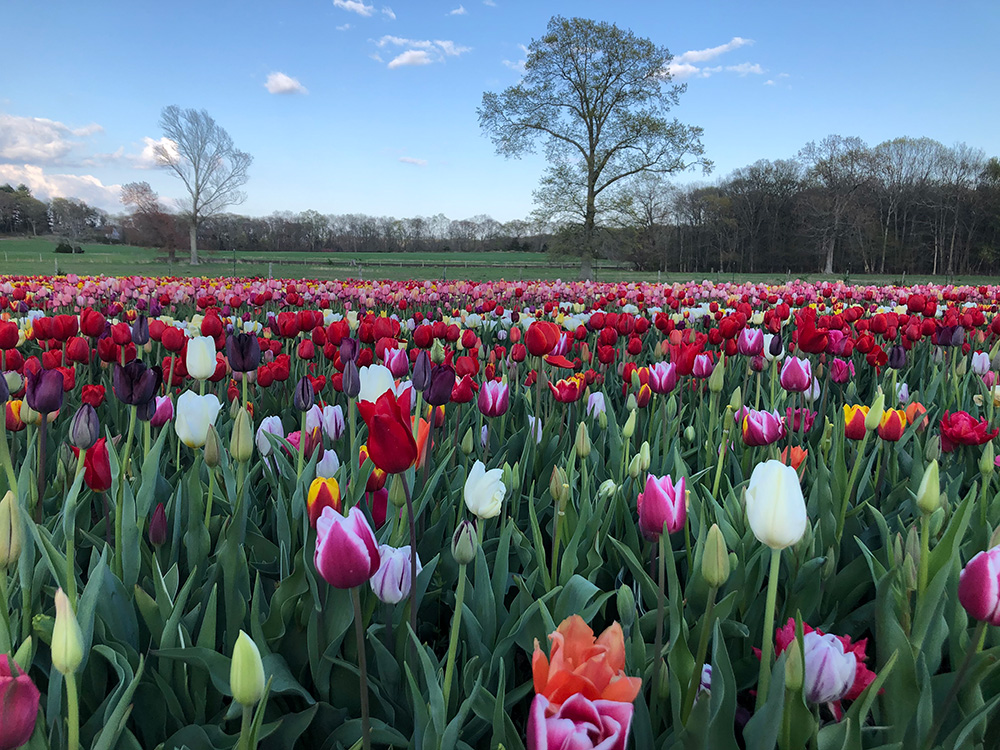

In this blog, we explore how Connecticut’s greenhouses, nurseries, farms, and garden centers are excellent places to visit during the spring. Whether you’re looking to improve your home or simply want a memorable experience, you’ll find something that’s right for you.
Greenhouses, nurseries and garden centers
Throughout the winter, Connecticut’s greenhouse and nursery producers have been busy sowing seeds, potting plants, and preparing to assist customers in the new growing season. By visiting a CT Grown greenhouse or nursery, you’ll receive:
- Expert guidance: Whether you’re trying to liven up a shady spot or need advice on growing a specific plant, greenhouse and nursery producers can offer expert advice and care plans tailored to your own property.
- Educational opportunities: The spring season often brings workshops and other educational opportunities at greenhouses and nurseries. Attendees can learn about seed starting, container gardening, composting, and much more.
- Great deals: To encourage people to pursue the big plans they have for their garden, nurseries and landscapes may offer discounts or open up loyalty programs at the beginning of the spring season. Take advantage of these to enjoy savings throughout the year.
- New inspirations: A visit to a garden or nursery can inspire a new vision for your home. Discover new plant options and features that can transform your rooms or landscaping.
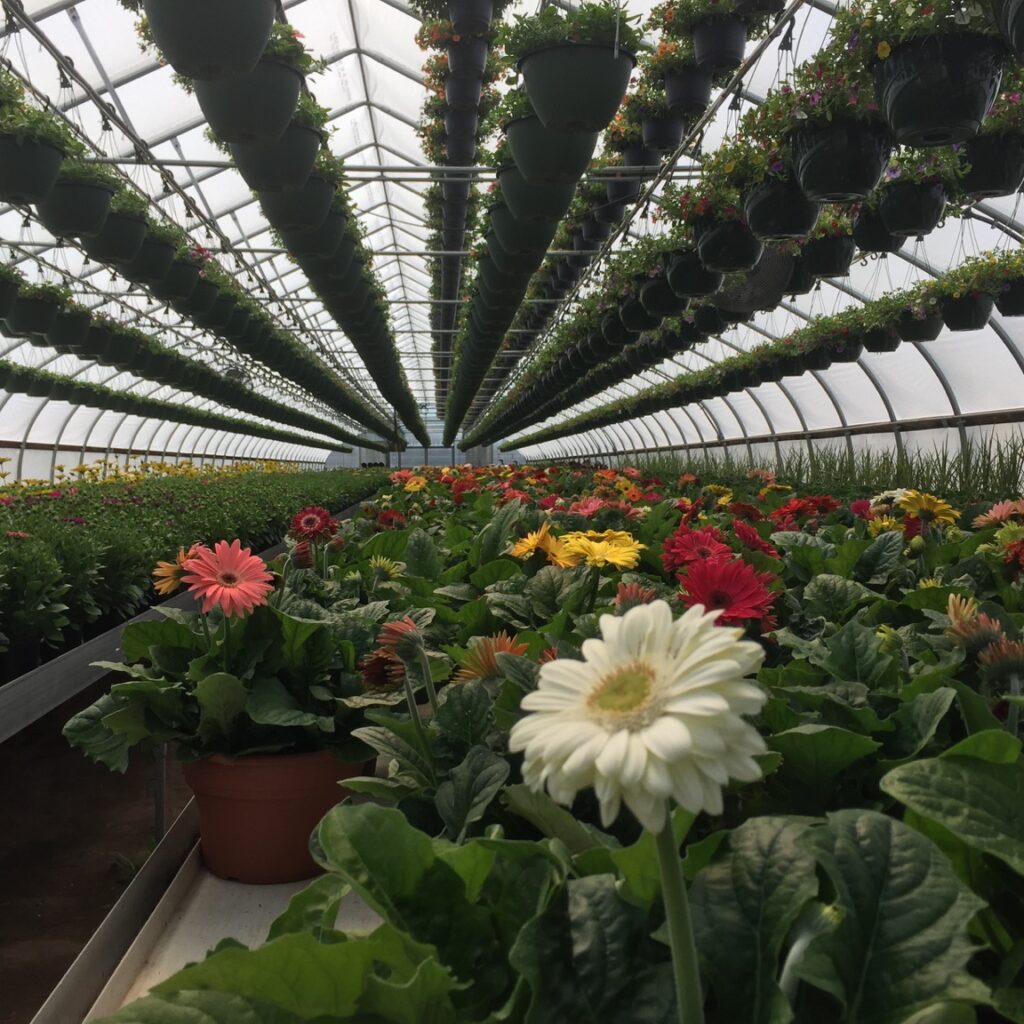
There’s no shortage of products available at greenhouses and nurseries to get a jump on the year’s gardening plans, including:
- Annual flowers: Although annuals only last a single season, they add a welcome pop of color to your garden and are easy to care for. Some of the annuals available in spring include Easter lilies, impatiens, marigolds, pansies, and petunias.
- Perennial flowers: Perennials return year after year, making them an easy option for long-term garden planning. Some spring perennial choices include coneflowers, daylilies, and hostas.
- Shrubs: A useful choice for boundaries or privacy barriers, shrubs can also create beautiful landscaping and support pollinators when you choose flowering varieties like butterfly bushes, hydrangeas, and viburnums.
- Fruiting trees: Add a small orchard alongside your vegetable garden using varieties like apple and cherry trees.
- Vines: Transform vertical surfaces into part of your garden using vining plants like clematis and honeysuckle.
- Vegetable starts and seedlings: Plants that have been sown indoors — including eggplants, herbs, peppers, and tomatoes — let you get a jump on the year’s harvest.
Walk-through flower experiences
Some farms in Connecticut give visitors an up-close look at the returning floral landscape by offering walk-through experiences. Visitors can stroll through the fields and marvel at the spectacle of thousands of flowers in bloom together.
In a relaxing, meditative experience, visitors are surrounded by the visual beauty and delightful scents of a sea of flowers. These scenes are also a popular photographic backdrop for everything from family portraits to engagement shots.
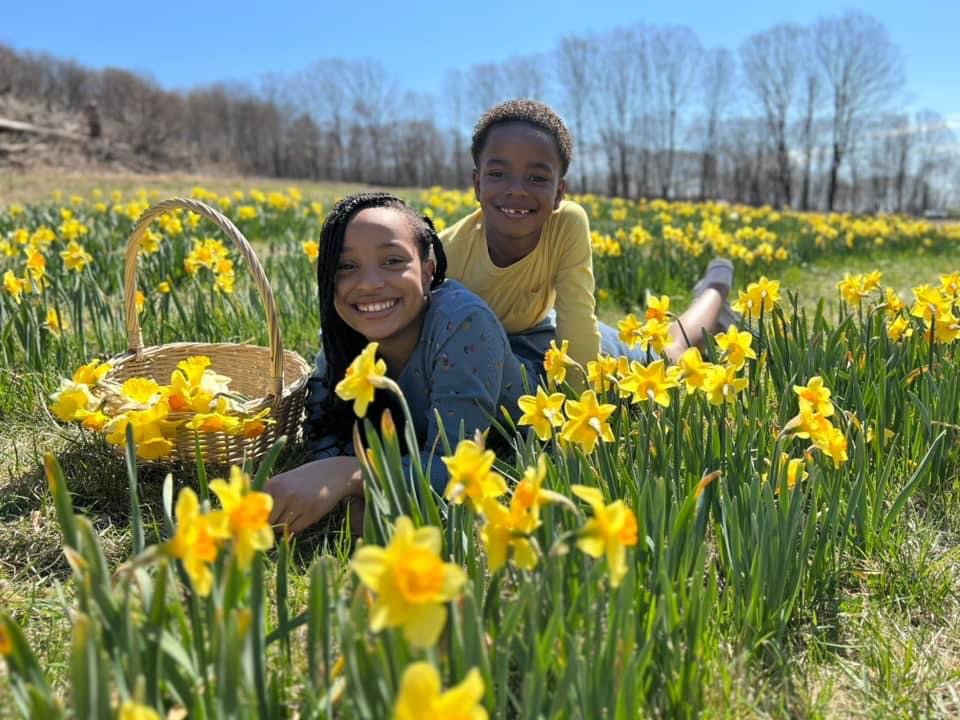
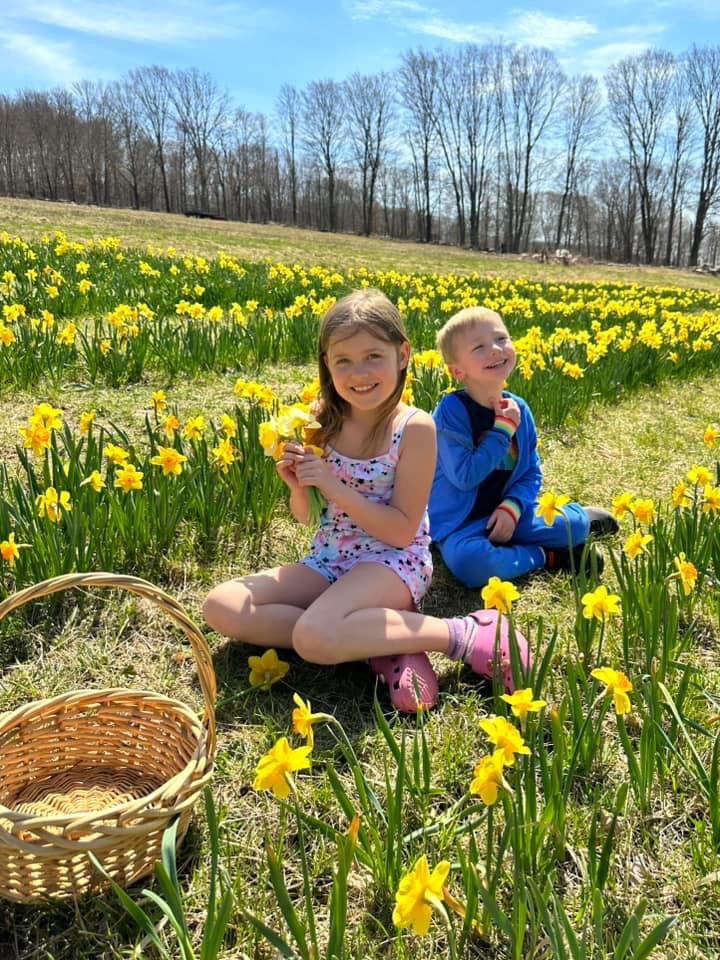
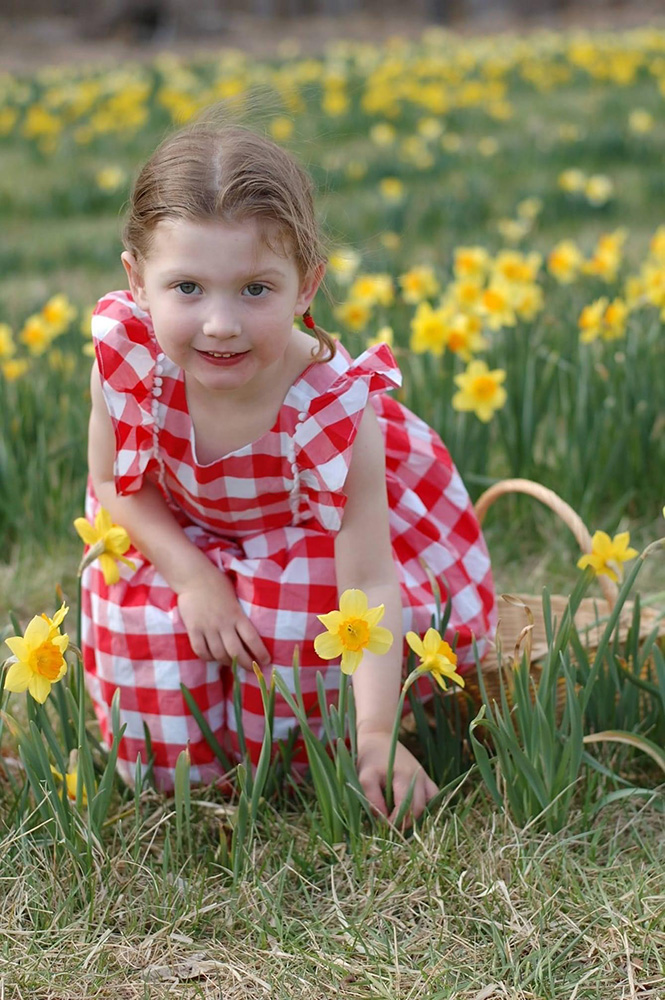
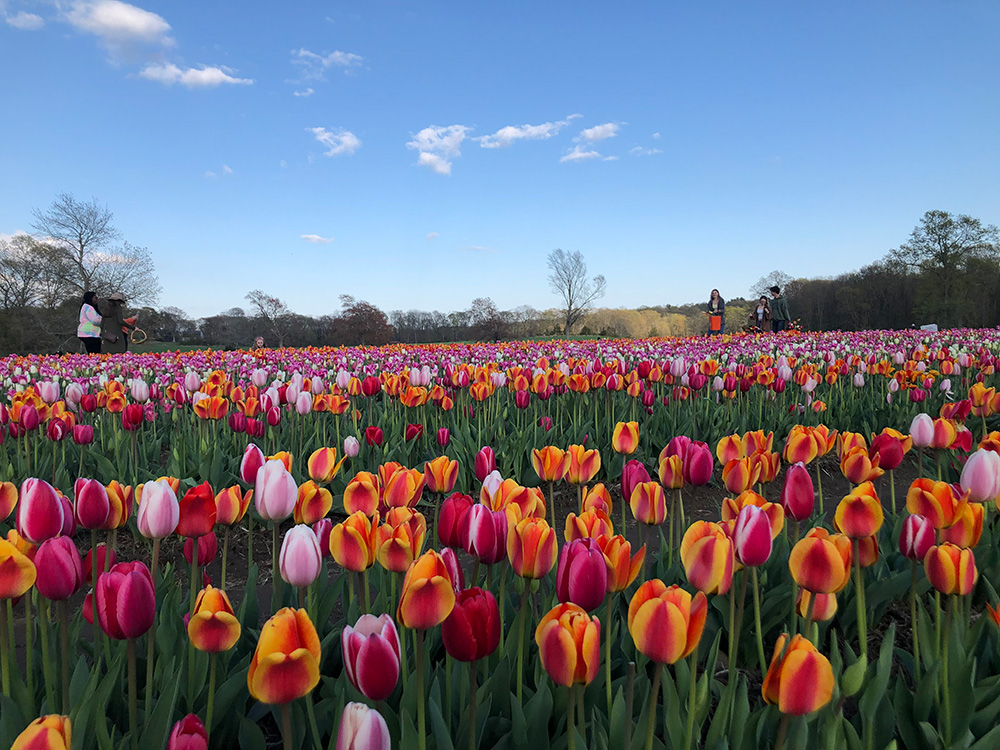
Walk-through flower experiences are often paired with pick-your-own options that let you take home a beautiful bouquet. Some options in Connecticut include:
- Halfinger Farms (Higganum): Every year, “Dancing Daffodils” at this farm lets visitors visit a field of these brilliant yellow flowers and pick their own selection. Halfinger Farms hosts several special events alongside the daffodil season, while also raising additional flowers such as peonies, violas, and mums.
- Lavender Pond Farm (Killingworth): Denise Salafia established this farm as a tribute to her mother, who died of breast cancer. Today, it invites visitors to walk through the fields as thousands of lavender plants come into bloom.
- Wicked Tulips (Preston): One of three locations growing a total of more than 1.5 million tulips, Wicked Tulips gives visitors the one-of-a-kind experience of walking through a vast field of these flowers during their brief but awe-inspiring time in bloom.
- Willow View Farm (West Suffield): Along with thousands of ornate dahlias, this farm lets visitors pick a selection of varieties that include daffodils, peonies, and tulips.
Cut flower CSAs
Community Supported Agriculture (CSA) programs go well beyond the traditional shares of fruits and vegetables, and Connecticut’s thriving floriculture businesses mean that there are plentiful options to find cut flower CSAs. Farms may offer these options either on their own or as an optional add-on to another CSA.

Spring flower CSAs are an excellent choice for people who can’t wait to get fresh flowers back into their home after a long winter. These feature seasonal flowers such as alliums, anemones, canterbury bells, daffodils, hyacinths, narcissus, ranunculus, and tulips. Farms often grow specialty varieties that aren’t usually found in stores, allowing each farm to create bouquets with a distinctive look.
Cut flower CSAs continue into summer and autumn, with each new share changing based on what’s in season. Some farms may also offer these CSAs into the winter, featuring greenhouse-grown flowers.
To find a cut flower CSA near you, visit the CT Grown map.
Winter is the best time to start planning the next season for your garden, but time is quickly running out! Whether you’re starting a new home garden or reviving an existing one, these steps will help ensure a productive spring.
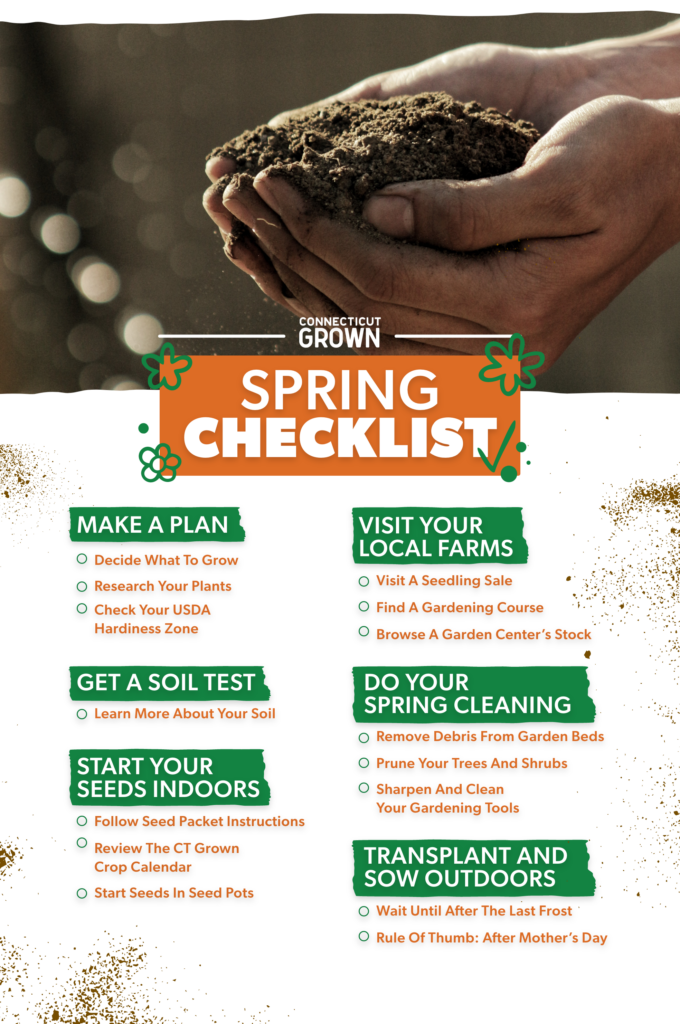
Helpful Resources
- Find your USDA Hardiness Zone
- Get your soil tested at the University of Connecticut’s Soil Nutrient Analysis Laboratory
- Check the CT Grown crop calendar
- Follow the Connecticut Nursery & Landscape Association